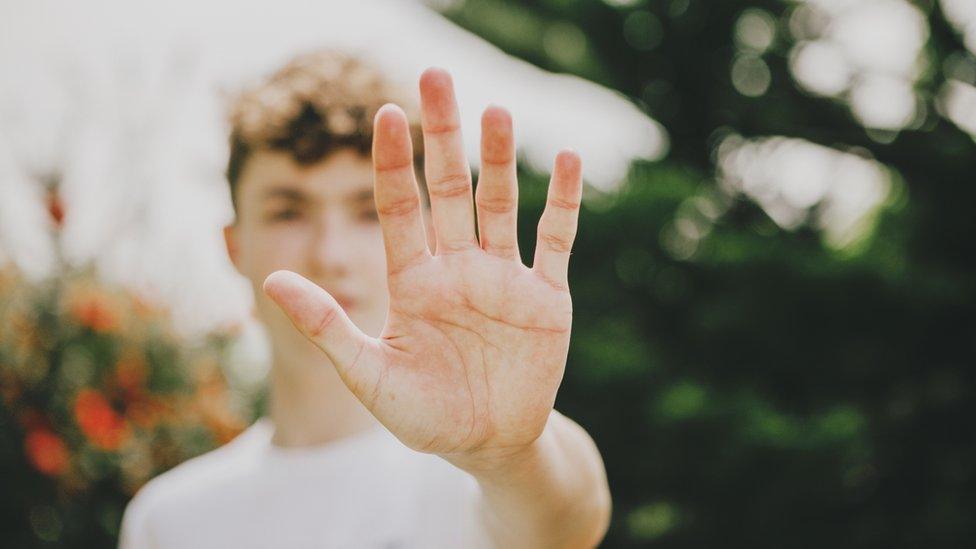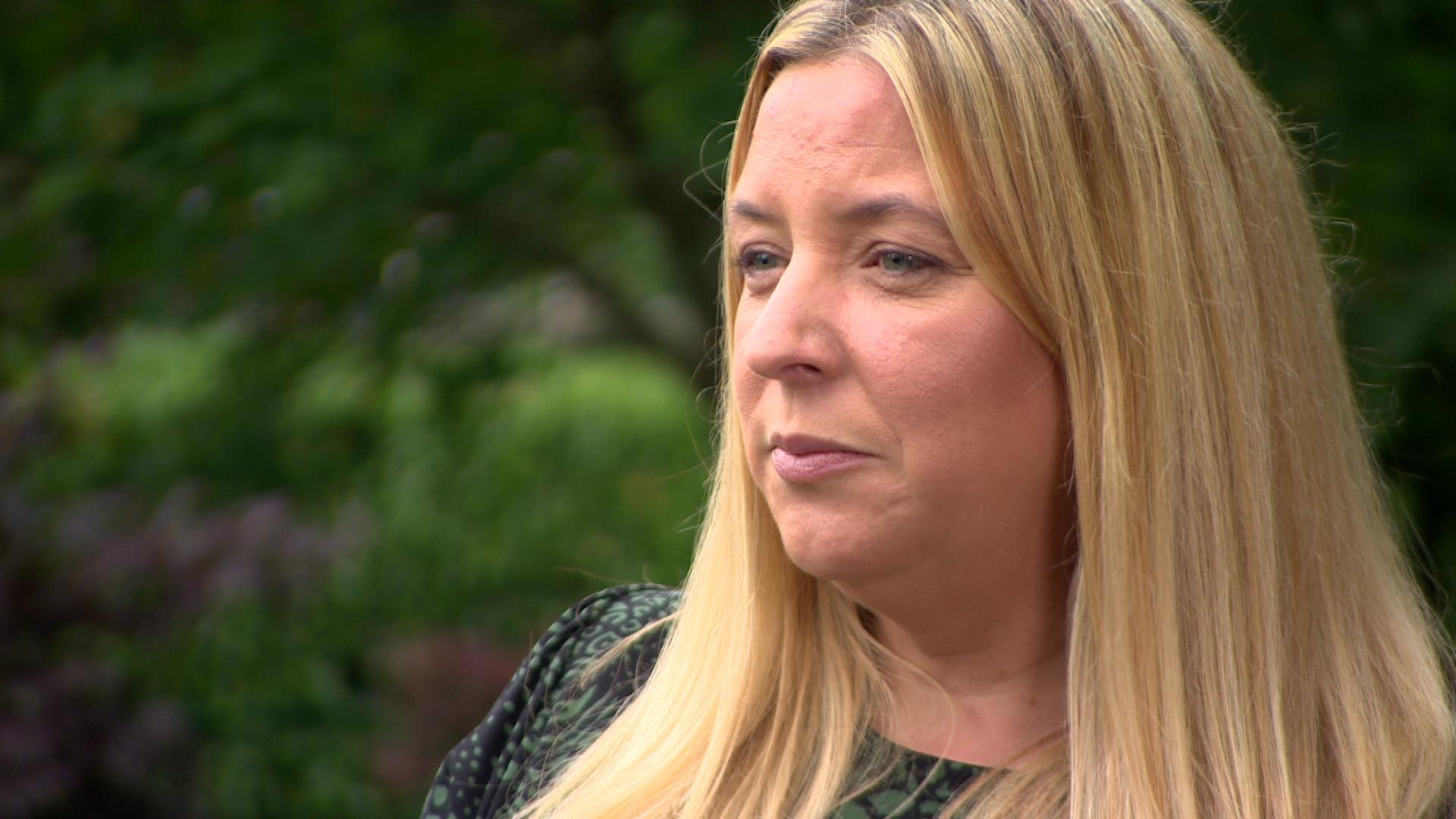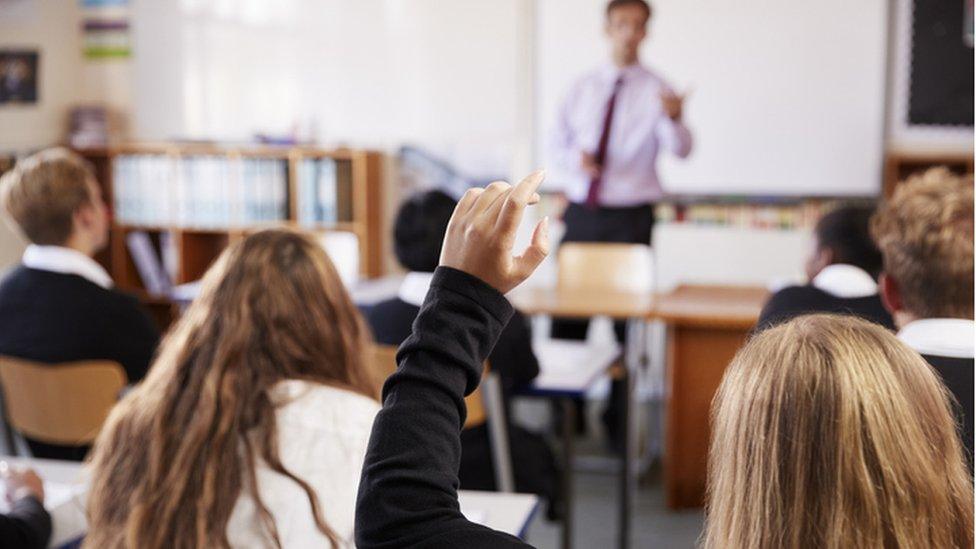Almost half of teens are sent unwanted sexual images online
- Published

Almost half of the 16-year-olds who took part in the study said they had been sent sexually explicit material online
Almost half of 16-year-olds have been sent unwanted sexually explicit pictures, photos or videos online, according to a new study.
However, just under a fifth of boys regard posting a joke or nasty comments of a sexual nature on social media as "sometimes acceptable".
This is according to responses from a sample of over 1,000 16-year-olds.
It is part of research contributing to the first Stormont strategy on ending violence against women and girls.
Northern Ireland is currently the only part of the UK without a specific strategy.
A separate but related Stormont strategy aimed at tackling domestic and sexual abuse is also being developed.
As part of the development of the Ending Violence Against Women and Girls (EVAWG) strategy, the executive office commissioned a series of questions to be put to 16-year-olds taking part in the 2022 Young Life and Times (YLT) Survey.
This is run by social policy researchers at Ulster University and Queen's University Belfast.
It includes a representative sample of 16-year-old boys and girls living in Northern Ireland.
Over 1,000 responded to 31 questions about their experiences and knowledge of "gender-based violence".
A report on their responses has just been published by the executive office, including their experience of violent acts or behaviours.

Girls were more likely to experience unwanted comments about their physical appearance and boys were more likely than girls to face verbal abuse or threats
More than nine in 10 said they had experienced at least one of 18 named "violent acts and behaviours".
Those included receiving sexually explicit material, street harassment like cat-calling, physical assault or unwanted touching.
Almost half, 47%, of the 16-year-olds who took part said they had been sent sexually explicit material online, and 30% said they had been pressured to share an intimate photo or video.
Almost 40% said they had received an unwanted intimate photo or video.
A third said they had experienced unwanted touching, hugging or kissing and more than half said they had been physically assaulted - hit, punched, pushed or slapped.
Girls were more likely to experience unwanted comments about their physical appearance or being sent unwanted sexually explicit pictures.
Boys were more likely than girls to have faced verbal abuse or threats, or physical assault.
The research also looked at how those 16-year-olds with disabilities or who were LGBT had experienced violent acts or behaviours.
'Coercive control'
The responses suggest that LGBT young people were more likely to face things like unwanted comments about their physical appearance or verbal threats or abuse.
Those with disabilities were more likely to have experienced "coercive control" - belittling or controlling behaviour by a partner or family member.
The research also asked the 16-year-old participants which violent acts or behaviours they regarded as "sometimes or always acceptable".
While the majority felt none of the behaviours were ever acceptable, just under a fifth of boys said posting a 'joke' or making nasty comments of a sexual nature on social media, or cat-calling or wolf-whistling at someone in the street was sometimes acceptable.
Thirteen percent of boys and 7% of girls also said it was sometimes acceptable "to control your partner, for example, preventing them from going out with friends".
In a previous consultation on the EVAWG strategy, respondents said changes to relationships and sex education in schools should be part of any plan.
It is expected that a draft strategy should be ready for public consultation in early 2023.
The Police Service of Northern Ireland (PSNI) recently published its first action plan aimed at reducing violence against women and girls.
Related topics
- Published28 September 2022

- Published27 September 2022

- Published6 August 2022
